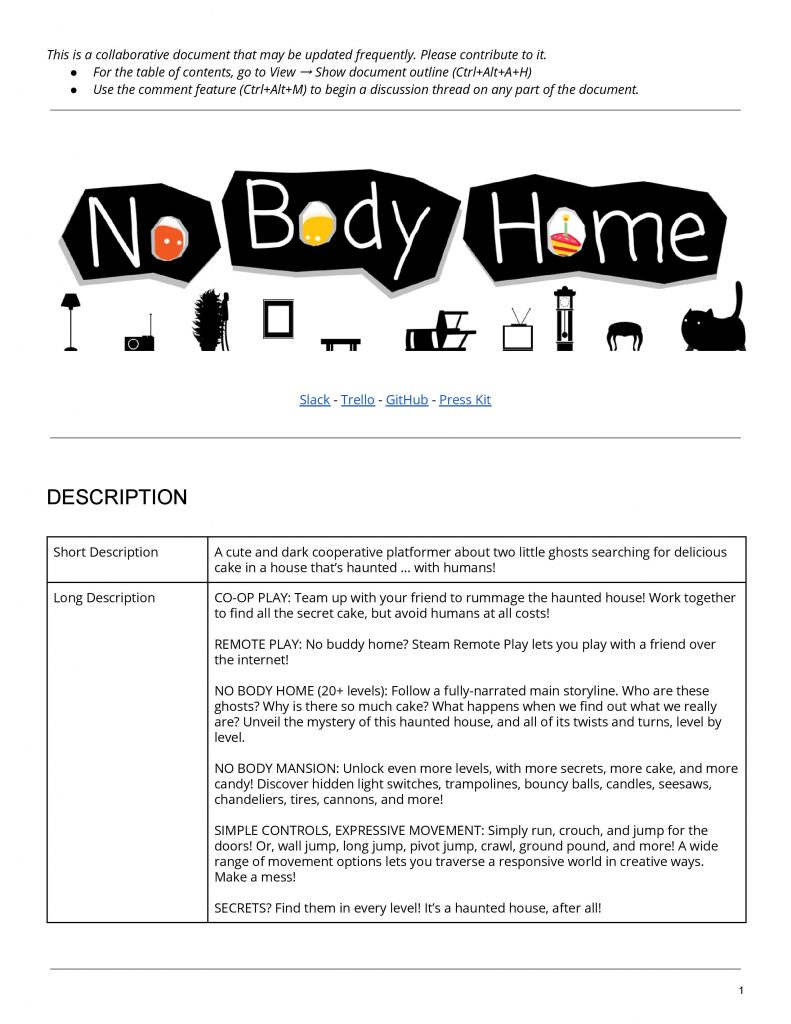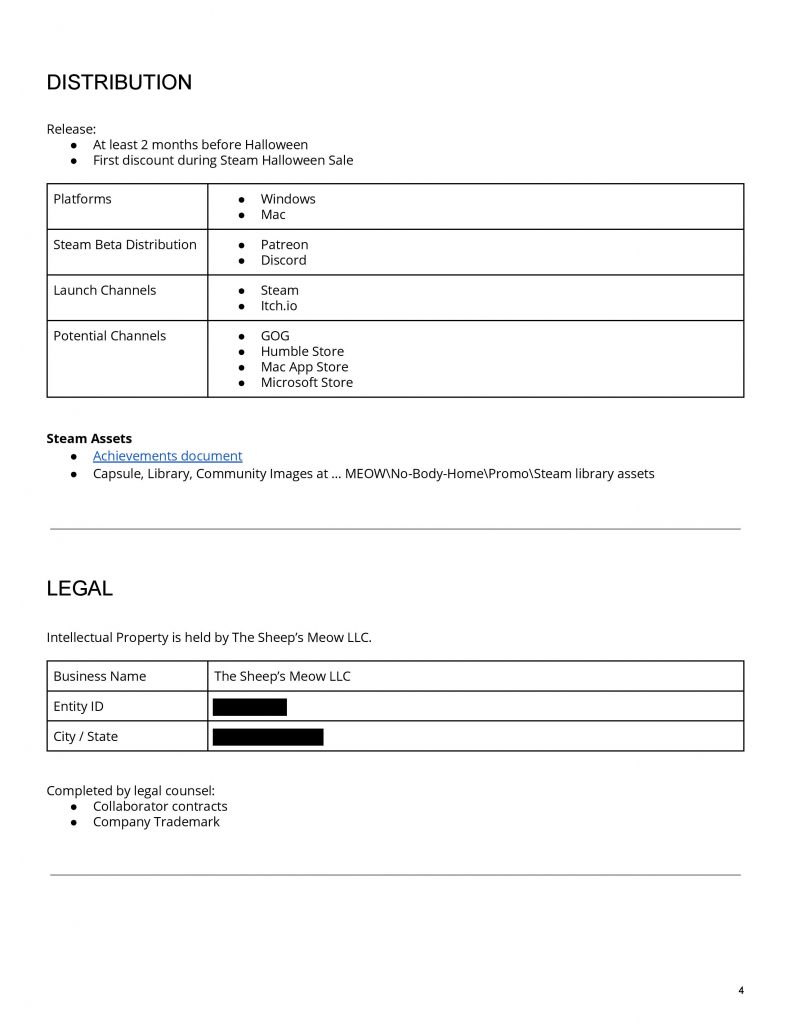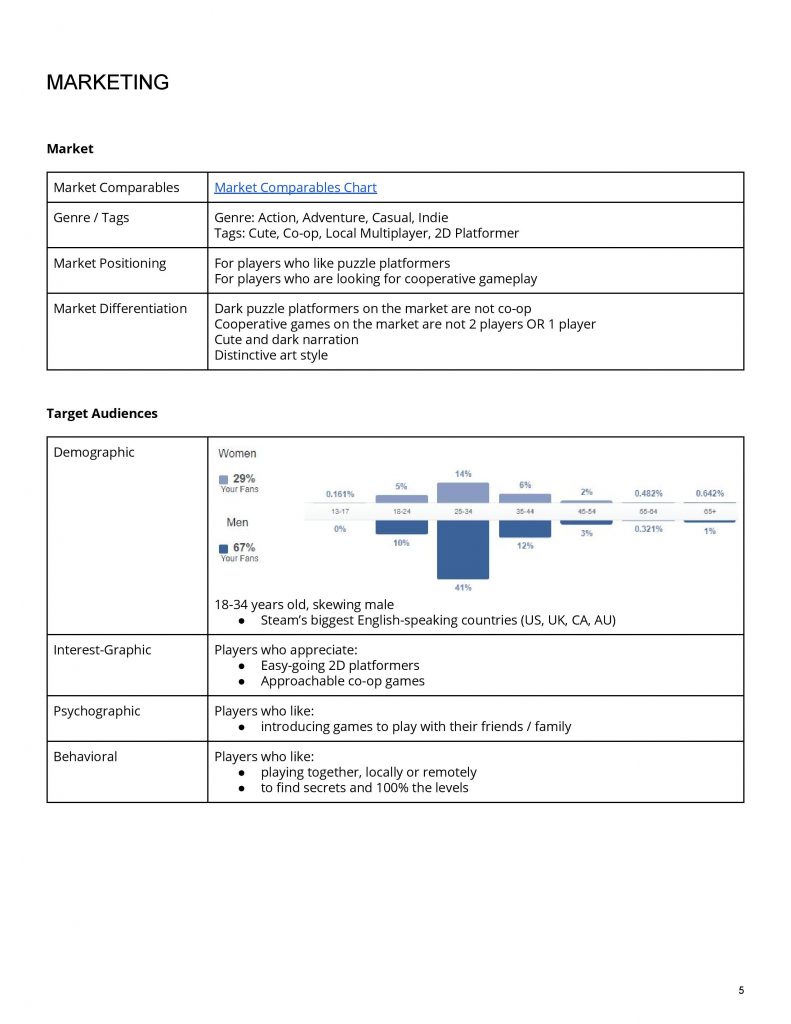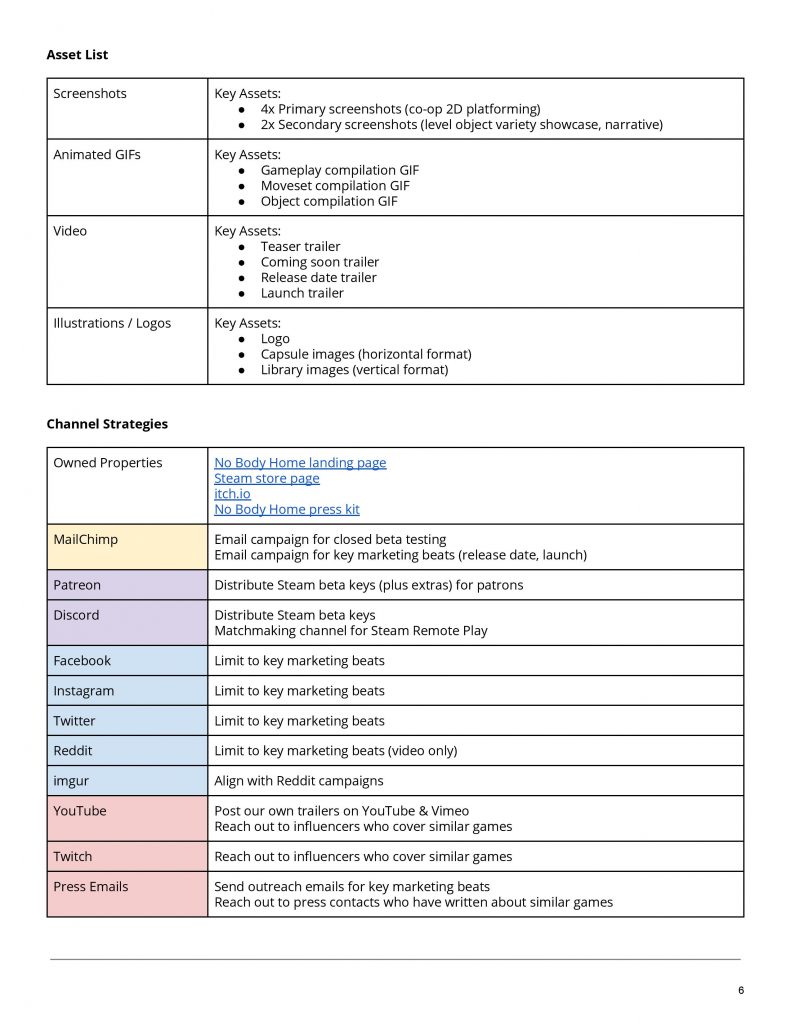
Steam (Windows, Mac). Collaborators: GJ Lee, David Kirman, Warren Savage, Nathan Clune.
A cute and dark cooperative platformer about two little ghosts searching for delicious cake in a house that’s haunted … with humans!
CO-OP PLAY: Team up with your friend to rummage the haunted house! Work together to find all the secret cake, but avoid humans at all costs!
REMOTE PLAY: No buddy home? Steam Remote Play lets you play with a friend over the internet!
NO BODY HOME (20+ levels): Follow a fully-narrated main storyline. Who are these ghosts? Why is there so much cake? What happens when we find out what we really are? Unveil the mystery of this haunted house, and all of its twists and turns, level by level.
NO BODY MANSION: Unlock even more levels, with more secrets, more cake, and more candy! Discover hidden light switches, trampolines, bouncy balls, candles, seesaws, chandeliers, tires, cannons, and more!
SIMPLE CONTROLS, EXPRESSIVE MOVEMENT: Simply run, crouch, and jump for the doors! Or, wall jump, long jump, pivot jump, crawl, ground pound, and more! A wide range of movement options lets you traverse a responsive world in creative ways. Make a mess!
SECRETS? Find them in every level! It’s a haunted house, after all!
Links
No Body Home at Steam
No Body Home at The Sheep’s Meow
Teaser & Gameplay
Design Goals
Satisfying player movement
- Simply moving around is fun
- A wide range of movement options makes traversal expressive
- Hand-crafted level design that supports moveset mastery
Responsive world
- Objects are fun to play with on their own, regardless of instrumental purpose
- Physical humor, including ordinary objects that behave in abnormal ways
Secrets to discover
- Collectibles are hidden in ways that support accidental discovery
- Use the darkness and light to hide other surprises
Cooperative level design
- Special objects and level layouts interesting interactions between 2 players
- Puzzles are never too punishing and platforming is never too hard
- Lack of time pressure invites exploration
Storybook charm
- Wholesome mixture of cute and dark themes
- Comic style that combines polished vector art and crude cutouts
- Surreal blend of old-fashioned and contemporary
Player Movement
The ghosts have a robust and expressive moveset. Level design should always complement it.
| State | Control | Comment |
| IDLE | Not pressing anything | |
| WALK | Move left / right while idle | Transitions into run |
| RUN | Move left / right while walking | No run button |
| PIVOT | Change direction while running | Stars appear at the feet + screech sound effect |
| CROUCH | LB or RB while grounded | |
| CRAWL | Move left / right while crouching | Can fit through narrow corridors |
| GROUND POUND | Crouch while airborne | Breaks bricks |
| JUMP | A button | No jump height variation (use other jump types) |
| LONG JUMP | Jump while crouching | Greater horizontal jump distance |
| PIVOT JUMP | Jump while pivoting | Greater vertical jump distance |
| WALL JUMP | Jump while against wall | Climb like Mega Man X |
Level Design: Perfect Jump Distances
A perfect jump distance is the exact height / width of a jump. This depends on starting and ending positions horizontally, vertically, and also depends on the type of jump used, including falls.
- It’s more satisfying when jumps and platforms match perfectly, than when they visibly do not match.
- Whenever possible, placement of platforms / collectibles / objects should match a perfect jump distance.
- Give an extra tile or two of leniency to the distance, so as not to require pixel-perfect precision.
- Communicate the jump distance and arc with lights and/or collectibles.
- To be precise, snap to the 32×32 grid, and use 16×16 for fine adjustments if necessary.
- Use the level layout “Distance Guide” to see playable examples and to copy/paste jump distance templates.
Level Design: Designing for two players
Both players should experience laddering from easy to hard, and be given a sense of progress. Co-op experience ranges from “multiplayer solitaire” to light “together play” to “teamwork required” and is parallel to difficulty. When testing, note any extremes:
- One player shouldn’t be subject to excessive delay by their partner
- One player shouldn’t be able to solve everything for both players
Two-Player Level Variations:
- ghosts are together
- ghosts are separate
- ghosts start together, but are forced to split up
- ghosts start separate, but later meet
- if ghosts are separate, they could be faraway, or they could be nearby yet separated by walls.
Level Design: Difficulty
No Body Home any%: Completing No Body Home is easy. Small levels with a clearly obvious way to get to the door.
No Body Home 100%: Finding the cake on each level should require teamwork, coordination, or communication. Players talking to each other is a good sign.
No Body Mansion: A wide range of levels, including some very difficult or very large levels. Later levels can pull out all the stops on puzzles, platforming, and secrets.
Level Design: Lighting
By default, the entire level is dark. Use lights to show the way. Light up:
- Platform corners, which gives more information with fewer lights used
- Landmarks that can be seen from far away, giving the player a long-term navigational goal
- A jump path, giving the player a short-term navigational goal
- Key obstacles or level objects, drawing attention to the main focus of the level
- Humans must be well-lit, or else players will feel it’s unfair
- A secret, but not necessarily the path to the secret
- A hint to a secret path, only revealing the secret once the player follows
Documentation Sample
Sample pages from the strategy documentation. The full PDF is available here.



